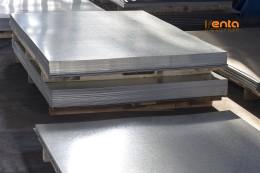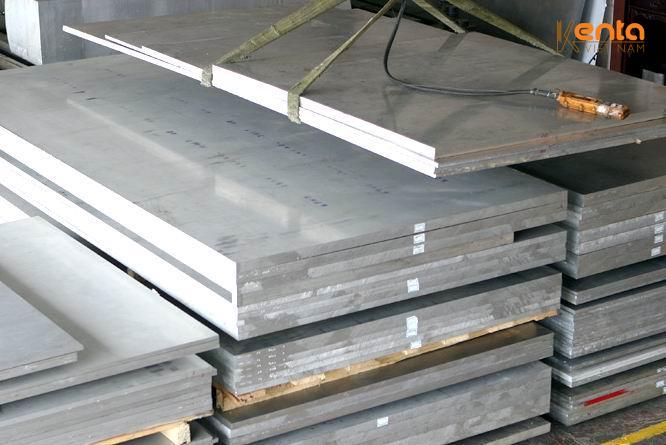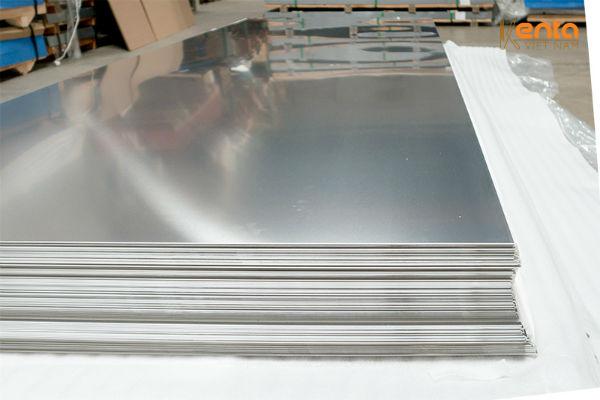Knowledge, Technology
Can aluminum sheets be welded?
Aluminum sheets are a common material in modern industry, but not everyone is sure whether they can be welded. In this article, we will find out if aluminum sheets can be welded, how to weld them correctly, and which type of aluminum is suitable for creating durable and aesthetically pleasing welds.
Is welding aluminum as simple as other metals?
For those accustomed to working with steel, welding is almost a "second nature" operation. But when it comes to aluminum, things become more challenging. Aluminum conducts heat many times faster than steel and has a thin, almost transparent surface oxide layer, which is very difficult to remove if not handled properly.
This oxide layer is precisely what causes unstable arcs, easily leading to porosity or cracks in the weld if the welder lacks experience. Additionally, aluminum is soft and easily deforms under thermal stress, so thin or long parts are very prone to warping if the welding operation is not steady.
Nevertheless, with the right technique, aluminum can be fully welded – and in fact, it is widely welded in many industries.
So, can aluminum sheets be welded?
The answer is: yes. Aluminum sheets can be fully welded using common methods such as MIG (GMAW) and TIG (GTAW). Not only can it be welded, but aluminum is also used in a wide range of structures requiring durability, such as fuel tanks, vehicle bodies, aluminum doors, electrical cabinet enclosures, and even in the manufacture of mechanical and marine equipment.
However, welding aluminum is not like ordinary steel welding. You need to prepare the correct type of welding wire or electrode specifically for each aluminum alloy. The shielding gas is usually pure argon or an argon-helium mixture if increased heat transfer is needed.
The beauty and durability of an aluminum weld largely depend on the quality of the input material, the welder's skill, and correctly set machine parameters. This is why choosing the right type of aluminum sheet from the outset is a prerequisite for achieving good quality welds.
Which type of aluminum should be chosen for good, low-defect welds?
The quality of aluminum not only affects structural durability but also determines the stability of the weld. The cleaner the aluminum sheet, the more uniform its composition, and the fewer impurities it contains, the easier the welding process is to control and the lower the risk of burning, porosity, or cracking.
At Kenta Vietnam, aluminum sheet lines suitable for TIG/MIG welding requirements are officially imported and come with full CO CQ certificates. Among them, aluminum 5052 and aluminum 6061 are two top choices favored by customers.

Aluminum 5052 has moderate softness, good corrosion resistance, strong welds, and is easy to process after welding. This type is commonly used in shipbuilding, fuel tanks, enclosures, and aluminum frames. As for aluminum 6061, with its rich magnesium and silicon content, it offers high hardness, a bright surface, strong and durable welds – suitable for precision mechanical structures.
Depending on the requirements, Kenta can supply aluminum sheets with thicknesses from 1mm to 75mm, large sizes 1200x2400mm – 1500x3000mm – 2000x6000mm, along with accompanying welding wires such as ER 4043 and ER5356 for customers to use immediately without having to search for materials.
Is aluminum welding difficult and what factors need to be considered?
Compared to steel welding, aluminum welding is considered a "more difficult" technique. But by understanding the basic principles, you can fully control the weld.
First is aluminum surface treatment. Before welding, the oxide layer must be thoroughly cleaned with a specialized stainless steel brush or aluminum cleaning chemicals. If left untreated, this oxide layer will obstruct the arc and cause porosity inside the weld.

Second is controlling the welding temperature. Because aluminum conducts heat quickly, it is necessary to choose an appropriate welding speed to avoid the weld burning too wide or not being hot enough for deep penetration.
Finally, you need to choose the correct welding wire and shielding gas. For aluminum 5052, dây ER5356 , ER5356 wire often yields good results. For aluminum 6061,, ER 4043 ER 4043 can be used to increase surface smoothness, or ER5356 if a harder weld is needed. Pure argon gas is the most common choice, as it stabilizes the arc and limits oxidation.
Practical applications of aluminum welding from civil to industrial
In actual production, aluminum welding is no longer unfamiliar. From civil products such as gates, drying racks,outdoor furniture, to heavy industries such as mold making, electric vehicle manufacturing, or shipbuilding – welded aluminum is an indispensable material.
If done correctly, welds on aluminum are not only strong but also very aesthetically pleasing, easy to further process such as grinding, polishing, or powder coating. This is why many designers prioritize welded aluminum instead of using bolted or glued assembled structures.
At Kenta Vietnam, many customers, after choosing the appropriate aluminum series, also receive our support in consulting welding solutions – from selecting accompanying materials to introducing processing units if needed. This helps save testing costs and limit risks in mass production.
Aluminum welding is a feasible technique if started correctly.
Welding aluminum sheets is not difficult if you understand the material correctly and invest in the process from the beginning. Choosing the right type of aluminum, thoroughly treating the surface, and combining it with the correct welding wire and welding gas will help create beautiful, strong, and durable welds – worthy of the potential that aluminum offers.
If you are looking for 5052, 6061 aluminum sheets, or specialized aluminum grades for welding, do not hesitate to contact Kenta VietNam. With a large warehouse, diverse thicknesses and sizes, and a technical team that understands the material – we are always ready to accompany you so that every weld is a plus for the finished product.




















